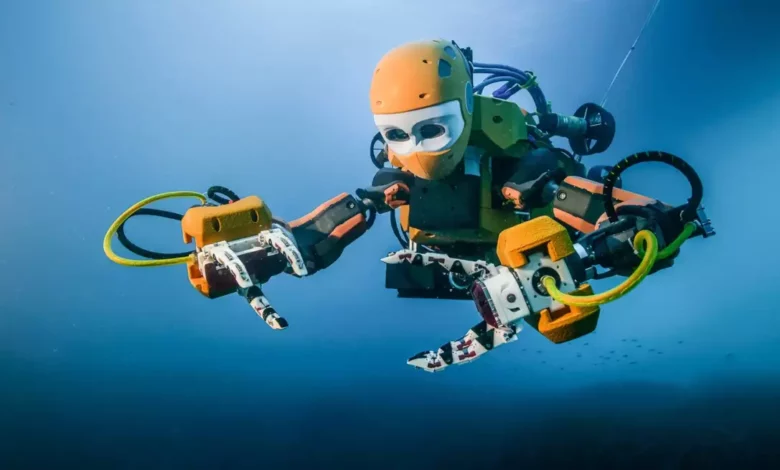UAE Tests Robot Divers With Hands That Can Clean Deep-Sea Coral

Scientists at the UAE’s Khalifa University and Stanford University in the US have teamed up to develop robots that will take on critical tasks, to help keep the world’s oceans clean.
The robot divers will be able to monitor the health of coral reefs and perform safety checks on offshore oil rigs.
They are being put through a series of simulations in a robotics pool opened at the university in Abu Dhabi, which replicates ocean waves, currents and harsh conditions in the deep sea.
The aim is for robots and robotic submarines to be built in Abu Dhabi and sent to ocean depths that are dangerous for humans to explore.
“We are collaborating with Khalifa University to take robotics forward for the exploration of the underwater,” Prof Oussama Khatib, director of the Stanford Robotics Lab and a pioneer in the field, told sources.



Prof Khatib built the Ocean One robot more than seven years ago, and it has since explored underwater wrecks and archaeological sites at depths close to 1,000 metres in the Mediterranean Sea.
The five-metres-long robot was brought to the Middle East for the first time to test the Khalifa University pool.
Controlled by a team on the ground, the orange and yellow robot scooped plastic bottles from mock coral reefs placed inside the pool during recent trials.
The Ocean One robot is different from most remotely operated vehicles used in deep sea exploration that have cameras to capture visuals but are not dexterous enough to safely move objects underwater.
The mechanical fingers of the humanoid robot replicate human movements, allowing it to work and communicate with teams of divers.



In tribute to the UAE’s tradition of pearl diving, the Ocean One robot carefully scooped up an oyster, placed it in a basket and brought it to the surface.
Each robot hand is fitted with sensors that send information to the pilot controlling it on the surface and it also transmits the sensation of touch.
“Our robot is unique right now and we hope to have a few more versions of it in the future,” Prof Khatib said.
“When the robot reaches the sea bed, the operator sitting on the boat or anywhere in the world is able to feel, through the hands of the robot, what the robot is touching, and see through its eyes what the robot is seeing.”
Ocean One was joined in the new pool by underwater robots built by Khalifa University researchers.
Researchers in Abu Dhabi are working to further develop these machines to add advanced capabilities and attach humanoid arms that can mimic human functions.
Prof Lakmal Seneviratne, director of the Khalifa University Centre for Autonomous Robotic Systems, said scientists and students will work on testing both surface and underwater robots in the Gulf region.
“There is a huge interest in marine robotics in the UAE because we are a country surrounded by water,” he said.
“With pioneers like Prof Oussama, we will work jointly at slowly increasing the autonomy of these robots in the future.
“Marine robotics is the new frontier, and we are excited to be at the forefront.”
The robots developed at Khalifa University can currently function at a depth of 300m and researchers will work on adding capabilities so they can tackle deep-sea tasks to keep human divers out of harm.
“If a human diver goes out to sea with a robot he can do more so divers and robots can work together,” Prof Seneviratne said.
“This is still at a very early stage at the university with a human being now controlling the robot.”
The collaboration, he said, will help to develop more autonomous robots.
“These are very exciting possibilities in marine robotics,” he said.




